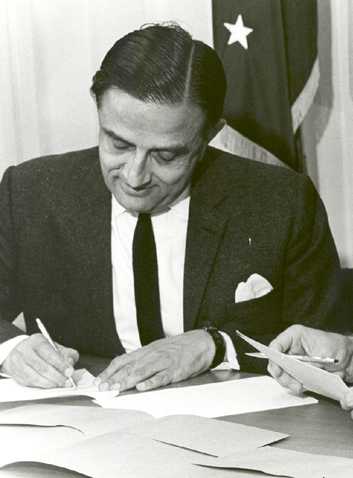Vikram Ambalal Sarabhai (12 August 1919 – 30 December 1971) is best known as the founder of ISRO, but little is known about his involvement in major institution-building efforts in India. The Indian Institute of Management, Ahmedabad is the most well-known.
Sarabhai founded the Indian National Committee for Space Research in 1962, later renamed the Indian Space Research Organization (ISRO), and also established the Thumba Equatorial Rocket Launching Station in southern India.
Following the death of physicist Homi Bhabha in 1966, Sarabhai was appointed chairman of India’s Atomic Energy Commission.
Sarabhai was largely responsible for the establishment and development of India’s nuclear power plants, carrying on Bhabha’s work in the field of nuclear research.
He laid the foundation for indigenous nuclear technology development for defence purposes.
Vikram Ambalal Sarabhai (12 August 1919 – 30 December 1971) is best known as the founder of ISRO, but little is known about his involvement in major institution-building efforts in India. The Indian Institute of Management, Ahmedabad is the most well-known.

Sarabhai founded the Indian National Committee for Space Research in 1962, later renamed the Indian Space Research Organization (ISRO), and also established the Thumba Equatorial Rocket Launching Station in southern India.
Following the death of physicist Homi Bhabha in 1966, Sarabhai was appointed chairman of India’s Atomic Energy Commission.
Sarabhai was largely essential for the implementation and development of India’s nuclear power plants, carrying on Bhabha’s work in the field of nuclear research.
He laid the foundation for indigenous nuclear technology development for defence purposes.
The Vikram Sarabhai Space Centre (VSSC), the Indian Space Research Organization’s lead facility for launch vehicle development, is named in his honour and is located in Thiruvananthapuram (Trivandrum), the state capital of Kerala.
On the first anniversary of his death, the Indian Postal Department issued a commemorative postal stamp (30 December 1972).
The International Astronomical Union decided in 1973, two years after his death, to name a lunar crater, Bessel A, in the Sea of Serenity the Sarabhai crater.
In his honour, the lander on India’s moon mission Chandrayaan-2, which was scheduled to land near the moon’s South Pole on September 20, 2019, was named Vikram.
On July 26, 2019, the BM Birla Science Centre in Hyderabad dedicated a space museum to him. Pranav Sharma curated the museum.
On September 30, 2020, ACK Media and ISRO will release a book titled Vikram Sarabhai: Pioneering India’s Space Programme. It was made available through Amar Chitra Katha’s digital platform and merchandise, ACK Comics. Rocket Boys is a web series based on the lives of Sarabhai and Homi J. Bhabha.
Dr. Sarabhai began work on a project that would result in the creation of India’s first artificial satellite orbiting the Earth. Aryabhata became the first Indian satellite to be launched four years after Dr Sarabhai’s death on the Kapustin Yar, a Russian rocket, in July 1976. It was named after an Indian mathematician and astronomer.
Vikram Sarabhai Awards:
In 1966, Vikram Sarabhai received the Padma Bhushan, India’s third-highest civilian honour.
In 1972, he was posthumously awarded the Padma Vibhushan, India’s second-highest civilian honour.
Sarabhai was scheduled to review the SLV design on December 30, 1971, before departing for Bombay that night. He had spoken on the phone with India’s then-President, Dr. A P J Abdul Kalam. However, Sarabhai died within an hour of the conversation due to cardiac arrest in Trivandrum at the age of 52. (now Thiruvananthapuram). In Ahmedabad, his body was cremated.



